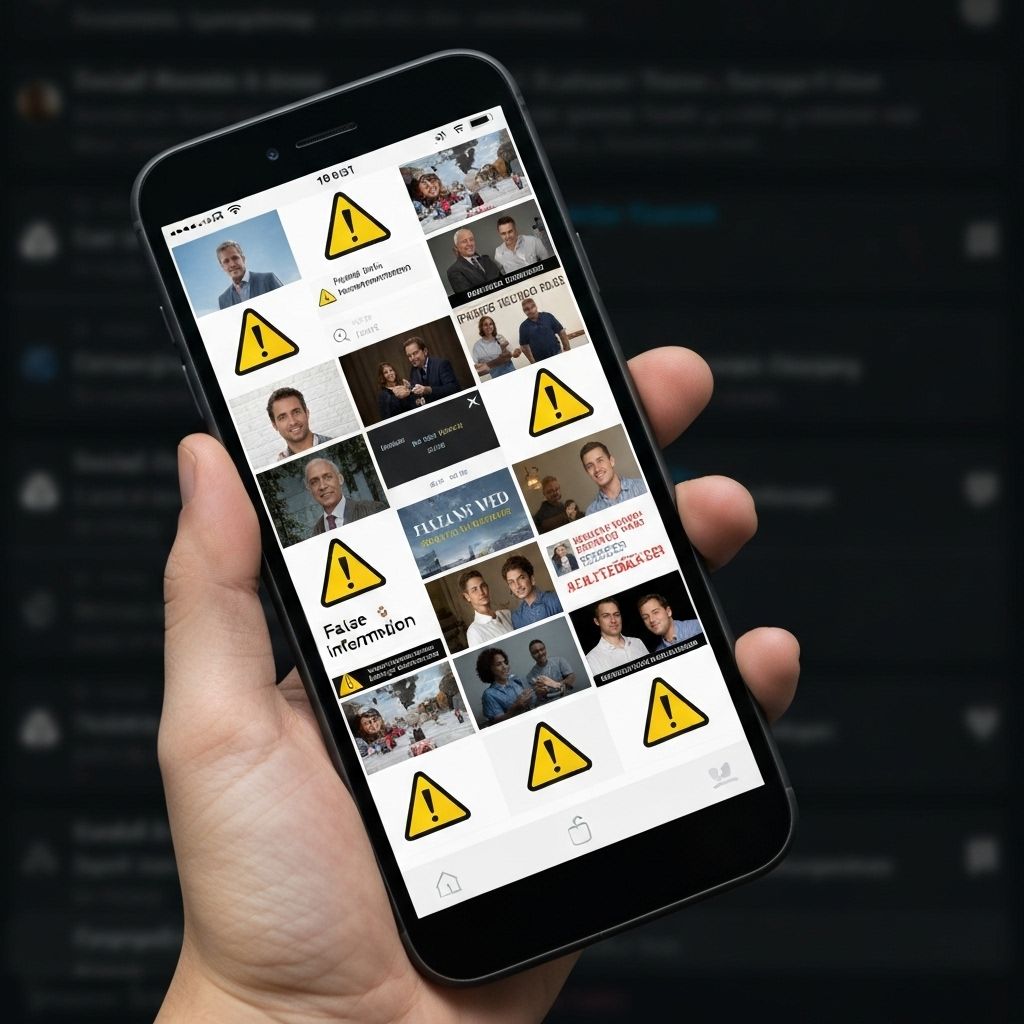The Hidden Dangers of Social Media for Critical Alerts: Why Dedicated Systems Matter

Many UK organisations rely on social media for emergency communications, but this approach carries significant risks. From algorithmic delays to rampant misinformation, here's why social media fails when lives are on the line.
The Illusion of Reach
Social media platforms promise massive reach, but the reality is far different during emergencies:
Algorithmic Filtering
- Only 5-10% of followers see organic posts
- Emergency content competes with entertainment
- Time-sensitive information gets buried
- No guarantee of delivery
- Platform algorithms prioritise engagement over urgency
The Echo Chamber Effect
- Users only see content the algorithm thinks they want
- Critical safety information may never appear
- Geographic targeting is imprecise
- Demographic bubbles limit reach
- Filter bubbles prevent information spread
The Misinformation Crisis
During emergencies, social media becomes a breeding ground for false information:
Speed of Spread
- False information spreads 6x faster than truth
- Emotional content gets amplified
- Verification takes time truth doesn't have
- Corrections rarely reach the same audience
- Damage is done before facts emerge
Types of Misinformation in UK Emergencies
Unintentional Misinformation:
- Misidentified locations or incidents
- Outdated information reshared
- Misunderstood official guidance
- Exaggerated threat assessments
- Innocent mistakes amplified
Deliberate Disinformation:
- Fake emergency alerts
- Manipulated images and videos
- False all-clear notifications
- Fabricated official statements
- Coordinated deception campaigns
Real UK Examples
Manchester Arena Attack (2017):
- False reports of additional incidents
- Fake missing person appeals
- Manipulated casualty figures
- Fraudulent fundraising campaigns
- Misinformation hampered response
COVID-19 Pandemic (2020-2021):
- False treatment information
- Fake NHS guidance
- Conspiracy theories about restrictions
- Misinformation about vaccines
- Confusion about changing rules
Storm Arwen (2021):
- Exaggerated damage reports
- False power restoration timelines
- Fake utility company statements
- Misleading road closure information
- Confusion about support availability
Algorithmic Delays: When Seconds Matter
Social media algorithms introduce dangerous delays in UK emergency communications:
How Algorithms Work
- Content is ranked by predicted engagement
- Emergency posts compete with all other content
- Time decay reduces visibility quickly
- User behaviour patterns influence delivery
- Platform priorities override urgency
The Timing Problem
- Posts may not appear for hours
- No guaranteed delivery time
- Users must actively check platforms
- Notifications are inconsistent
- Critical windows are missed
Real-World Impact
During the 2022 London Bridge incident, social media posts from authorities took an average of 47 minutes to reach 50% of local followers—far too slow for a rapidly evolving security situation.
The Verification Dilemma
Distinguishing real from fake is increasingly difficult:
Sophisticated Fakes
- AI-generated content
- Deepfake videos
- Cloned official accounts
- Verified badge exploitation
- Professional-looking graphics
Verification Challenges
- No time to fact-check during emergencies
- Official sources may be slow to respond
- Multiple conflicting reports
- Emotional decision-making
- Cognitive overload
The Blue Tick Problem
Twitter/X's verification changes have made it harder to identify legitimate official accounts, with paid verification available to anyone regardless of authenticity.
Platform Reliability Issues
Social media platforms are inherently unreliable for critical communications:
Technical Failures
- Platform outages during peak demand
- Server overload during major incidents
- API rate limiting
- Geographic restrictions
- Mobile app crashes
Policy Changes
- Sudden algorithm updates
- Changing terms of service
- Account suspension risks
- Content moderation delays
- Platform priorities shift
No Service Level Agreements
- No guaranteed uptime
- No delivery commitments
- No accountability for failures
- No emergency prioritisation
- No legal obligations
The Attention Economy
Social media platforms are designed for engagement, not emergency response:
Competing for Attention
- Emergency content competes with entertainment
- Algorithms favour viral content
- Serious information gets deprioritised
- Users are distracted by other content
- Alert fatigue from non-emergency posts
The Scroll Problem
- Users scroll past important information
- No way to ensure message is seen
- Competing visual content
- Short attention spans
- Information overload
Demographic Limitations
Not everyone uses social media equally in the UK:
Age Disparities
- Older adults less likely to use platforms
- Younger users on different platforms
- Generation gaps in platform preference
- Digital exclusion issues
- Accessibility barriers
Digital Divide
- Not everyone has smartphones
- Data costs limit access
- Rural connectivity issues
- Socioeconomic factors
- Vulnerable populations underserved
Legal and Compliance Issues
Relying on social media creates compliance problems for UK organisations:
Civil Contingencies Act
- No guarantee of reaching affected populations
- Inability to demonstrate due diligence
- Lack of delivery confirmation
- No audit trail
- Insufficient for legal obligations
UK GDPR Concerns
- Sharing data with third-party platforms
- Lack of control over data processing
- International data transfers
- User privacy implications
- Consent complications
Duty of Care
- Inadequate for safeguarding obligations
- Insufficient for health and safety compliance
- Liability for missed communications
- Negligence concerns
- Insurance implications
The Better Alternative: Dedicated Alert Systems
Purpose-built crisis communication platforms address these failures:
Guaranteed Delivery
- Direct push notifications
- Multi-channel redundancy
- Delivery confirmation
- No algorithmic filtering
- Service level agreements
Verified Communications
- Authenticated sender identity
- Secure, tamper-proof messages
- Official channels only
- No third-party interference
- Chain of custody
Targeted Reach
- Geographic precision
- Demographic targeting
- Role-based distribution
- Opt-in databases
- 100% reach of registered users
Compliance and Accountability
- Full audit trails
- Delivery reports
- Read receipts
- UK GDPR compliant
- Meets legal obligations
Speed and Reliability
- Instant delivery (under 15 seconds)
- No delays or filtering
- Priority routing
- Redundant infrastructure
- 99.9%+ uptime
Best Practices for UK Organisations
If you must use social media for emergencies:
Use It as a Supplement, Not Primary Channel
- Never rely solely on social media
- Use dedicated alert systems first
- Social media for additional reach only
- Assume limited effectiveness
- Plan for platform failures
Verify Before Sharing
- Confirm information accuracy
- Use official sources only
- Check multiple sources
- Be cautious of viral content
- Correct misinformation promptly
Maintain Official Presence
- Verified accounts on major platforms
- Consistent branding and messaging
- Regular posting to maintain visibility
- Clear identification as official
- Monitor for impersonation
Combat Misinformation
- Rapid response to false information
- Clear, factual corrections
- Partner with platform fact-checkers
- Educate public on verification
- Report fake accounts and content
Prepare for Failure
- Backup communication channels
- Redundant systems
- Alternative platforms
- Traditional media relationships
- Direct communication capabilities
The Future of Emergency Communication
Emerging trends in UK crisis communication:
Platform Regulation
- Government oversight increasing
- Duty of care legislation
- Misinformation accountability
- Emergency communication standards
- Platform responsibilities
Technology Solutions
- AI-powered verification
- Blockchain authentication
- Decentralised platforms
- Enhanced security measures
- Improved targeting capabilities
Public Education
- Media literacy programmes
- Verification skills training
- Critical thinking development
- Source evaluation
- Misinformation awareness
Case Study: Why Dedicated Systems Work
Organisation: Major UK University
Incident: Campus security threat
Social Media Approach (Previous Incident):
- Posted alert on Twitter/X and Facebook
- Only 12% of students saw posts within first hour
- Misinformation spread rapidly
- Confusion about safe areas
- Delayed all-clear caused anxiety
Dedicated Alert System (Current Incident):
- Push notifications to all registered users
- 98% delivery within 90 seconds
- Clear, verified information
- Geographic targeting to affected areas
- Confirmed receipt and safety check-ins
- Rapid all-clear notification
Outcome: The dedicated system proved dramatically more effective, with faster response, less confusion, and better safety outcomes.
Conclusion
Social media has a role in emergency communication, but it should never be your primary or sole channel for critical alerts. The combination of algorithmic delays, rampant misinformation, unreliable delivery, and platform limitations makes social media fundamentally unsuitable for life-safety communications.
UK organisations serious about protecting their people must invest in dedicated crisis communication platforms that guarantee delivery, prevent misinformation, and meet legal obligations. When lives are on the line, you can't afford to rely on algorithms and hope your message gets through.
The question isn't whether you can afford a dedicated alert system—it's whether you can afford not to have one when an emergency strikes.
---
This article provides general guidance based on UK emergency communication principles and observations of social media limitations during crises.
Ready to Enhance Your Crisis Communication?
See how Is Everyone Safe can help protect your people during emergencies.

